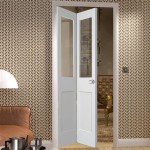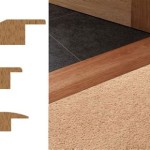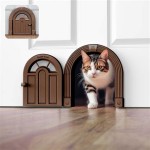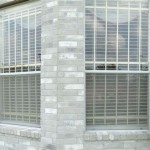How To Paint a House Interior With a Sprayer
Achieving a professional-looking paint job within a house interior often involves the use of a paint sprayer. While brushes and rollers have their place, sprayers offer a smoother, more even finish, particularly on textured surfaces and large areas. This article details the necessary steps and considerations for successfully painting a house interior with a sprayer, ensuring a high-quality outcome.
Before initiating any painting project, thorough preparation is crucial. This stage encompasses not only the physical preparation of the space but also the selection of the appropriate equipment and materials. Rushing this phase can lead to subpar results and increased project time.
Preparing the Room for Painting
The initial step involves removing all movable furniture from the room. Items that cannot be removed should be carefully covered with drop cloths or plastic sheeting. This protects furniture from paint splatters and overspray. It is advisable to use canvas drop cloths for the floor as they are more durable and less slippery than plastic. Plastic sheeting, while cost-effective, can become slippery and poses a tripping hazard.
Next, address any imperfections in the walls. Fill nail holes, cracks, and dents with spackle or joint compound. Allow the filler to dry completely according to the manufacturer's instructions, then sand the patched areas smooth with fine-grit sandpaper. This ensures a uniform surface for painting and prevents imperfections from being highlighted by the sprayer.
Thoroughly clean the walls to remove dust, dirt, and grease. Use a damp cloth or sponge with a mild detergent solution. Grease spots may require a stronger degreasing cleaner. Rinse the walls with clean water and allow them to dry completely before proceeding. This step is essential for proper paint adhesion.
Protect surfaces that should not be painted, such as trim, windows, and door frames, with painter's tape. Use a high-quality painter's tape that provides a clean release and prevents paint bleed-through. Press the tape firmly against the surface to create a tight seal. Take the time to apply the tape carefully, as this will significantly impact the final appearance of the painted room.
Proper ventilation is essential when painting indoors, particularly with a sprayer which can create a significant amount of airborne paint particles. Open windows and doors to allow for airflow. Set up fans to circulate air and expedite drying. If ventilation is limited, consider using a respirator to protect against inhaling paint fumes.
Selecting the Right Sprayer and Paint
There are several types of paint sprayers available, each with its own advantages and disadvantages. Airless sprayers are generally preferred for interior painting due to their ability to deliver a smooth, even finish quickly. They work by pressurizing the paint and forcing it through a small nozzle, atomizing it into a fine mist. High-volume, low-pressure (HVLP) sprayers are another option, offering finer control and less overspray, but they are typically slower and require more thinning of the paint. Air-assisted airless sprayers combine the benefits of both airless and HVLP sprayers, but they are more expensive.
Consider the size of the project when selecting a sprayer. For smaller rooms or touch-up work, a smaller, handheld sprayer may suffice. For larger rooms or entire houses, a larger sprayer with a remote paint reservoir is more efficient. Ensure the sprayer is compatible with the type of paint being used. Some sprayers are designed for specific types of paint, such as latex or oil-based.
The choice of paint is equally important. Interior paints are typically available in latex (water-based) and alkyd (oil-based) formulations. Latex paints are generally preferred for interior walls due to their low odor, easy cleanup, and durability. Alkyd paints offer better adhesion and a harder finish, making them suitable for trim and doors that are subject to frequent use. Select a paint with the appropriate sheen level for the intended use. Flat paint is ideal for ceilings as it minimizes imperfections, while eggshell or satin paints are suitable for walls as they are more washable and offer a subtle sheen. Semi-gloss or gloss paints are commonly used for trim and doors as they provide a durable, easy-to-clean finish.
Thinning the paint may be necessary, particularly when using a sprayer. Consult the sprayer manufacturer's instructions and the paint manufacturer's recommendations for the appropriate thinning ratio. Use the recommended thinner for the specific type of paint being used. Over-thinning can result in runs and uneven coverage, while under-thinning can clog the sprayer and produce a textured finish.
Always test the sprayer and paint combination on a piece of cardboard or scrap material before beginning to paint the walls. This allows to adjust the sprayer settings and ensure proper atomization and coverage. Practice spraying techniques, such as maintaining a consistent distance from the surface and overlapping each pass by about 50 percent. This practice will help achieve a smooth, even finish on the walls.
Spraying Techniques and Safety Precautions
Before beginning to spray the walls, ensure that the room is properly lit. Adequate lighting helps to identify any missed spots or imperfections in the paint. Use drop lights or work lights to illuminate areas that are not well-lit by the existing fixtures.
Start spraying in a corner and work across the wall in a consistent, overlapping pattern. Hold the sprayer approximately 10-12 inches from the wall and move it parallel to the surface. Maintain a consistent speed and distance to avoid runs and uneven coverage. Overlap each pass by about 50 percent to ensure a seamless finish. Avoid stopping or starting the sprayer in the middle of a wall, as this can create noticeable lines or blotches. Instead, trigger the sprayer before reaching the edge of the wall and release it after passing the edge.
Spray the ceilings first, followed by the walls. This prevents drips from the ceiling from ruining the finished walls. When spraying the ceiling, use a ladder or scaffolding to reach the desired height. Work in small sections and overlap each pass to ensure complete coverage. Be careful not to spray too much paint in one area, as this can cause drips and runs.
When painting trim and doors, use a smaller spray tip and reduce the paint pressure to minimize overspray. Apply thin, even coats and allow each coat to dry completely before applying the next. Use painter's tape to protect adjacent surfaces and prevent paint from getting on areas that should not be painted.
Safety is paramount when using a paint sprayer. Always wear a respirator or face mask to protect against inhaling paint fumes. Wear eye protection, such as safety glasses or goggles, to prevent paint from getting into the eyes. Wear gloves to protect the hands from paint exposure. Work in a well-ventilated area to minimize the risk of inhaling harmful fumes. Avoid spraying near open flames or sources of ignition, as many paints are flammable.
Clean the sprayer thoroughly after each use. This prevents paint from drying and clogging the sprayer. Follow the manufacturer's instructions for cleaning the sprayer. Typically, this involves flushing the sprayer with the appropriate solvent, such as water for latex paint or mineral spirits for oil-based paint. Disassemble the sprayer and clean each component separately to ensure complete removal of paint residue. Store the sprayer in a clean, dry place.
After painting, allow the paint to dry completely before removing the painter's tape. Use a utility knife to score along the edge of the tape before peeling it off to prevent the paint from chipping or peeling. Touch up any imperfections or missed spots with a brush or roller. Clean up any spills or drips immediately with a damp cloth. Dispose of used paint cans and cleaning materials properly according to local regulations.

Beginner Guide To Painting Interior Walls With A Sprayer Lemon Thistle

How To Spray Paint Walls And Ceilings Diffe Colours With An Airless Sprayer Wagner

All About How And Why To Use A Paint Sprayer Your Home

How To Spray Paint Interior Walls

Beginner Guide To Painting Interior Walls With A Sprayer Lemon Thistle

Spray Everything Fine Homebuilding
:max_bytes(150000):strip_icc()/is-a-paint-sprayer-necessary-1822685-hero-c1a7269b8be14eceb076d9d0c38a97f0.jpg?strip=all)
How To Pick Out A Paint Sprayer

Using A Paint Sprayer Indoors How To Use An Indoor

How To Paint An Interior Room With A Sprayer

Spray Painting Walls And Ceilings Diffe Colours With An Airless Paint Sprayer
Related Posts








